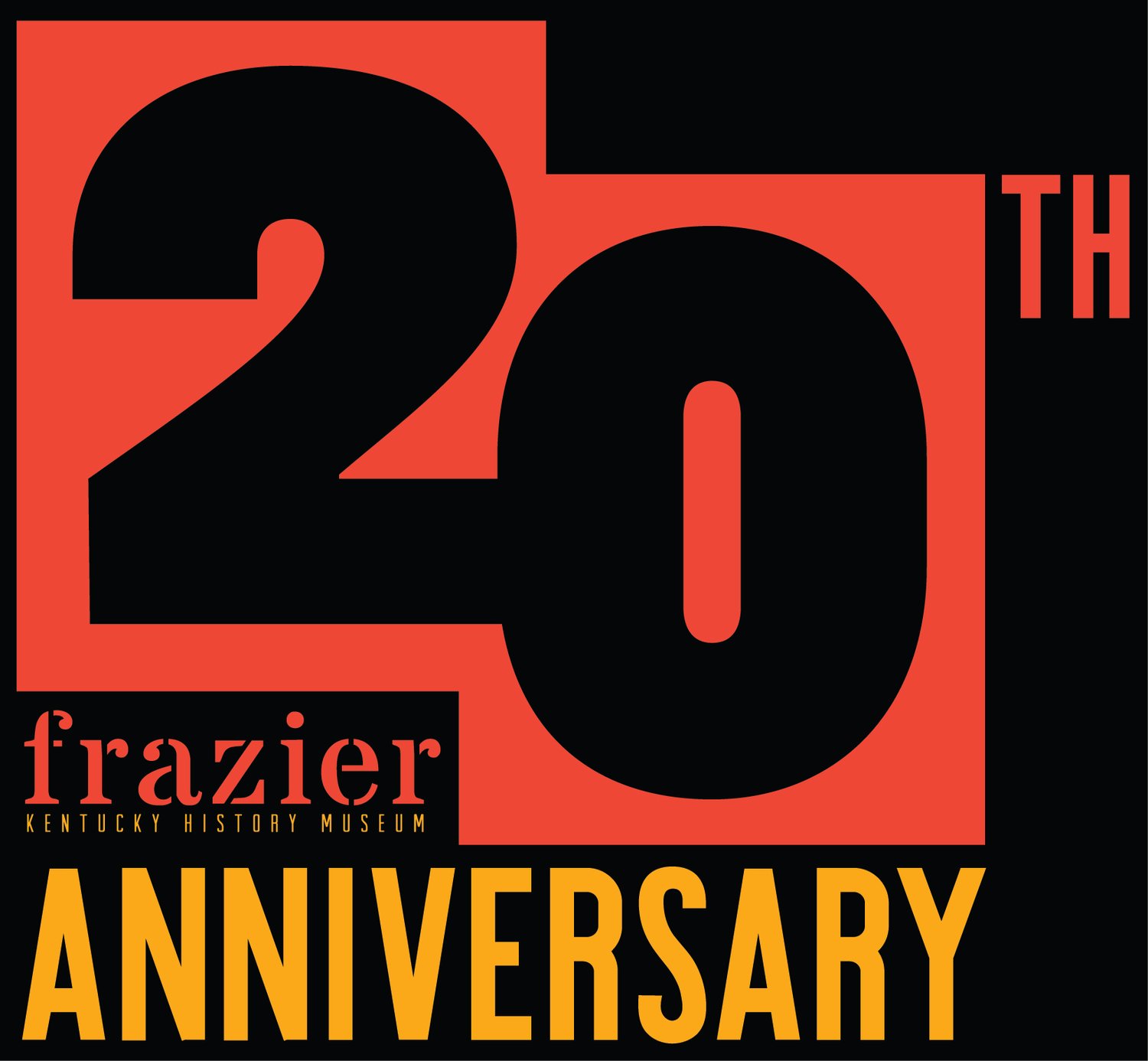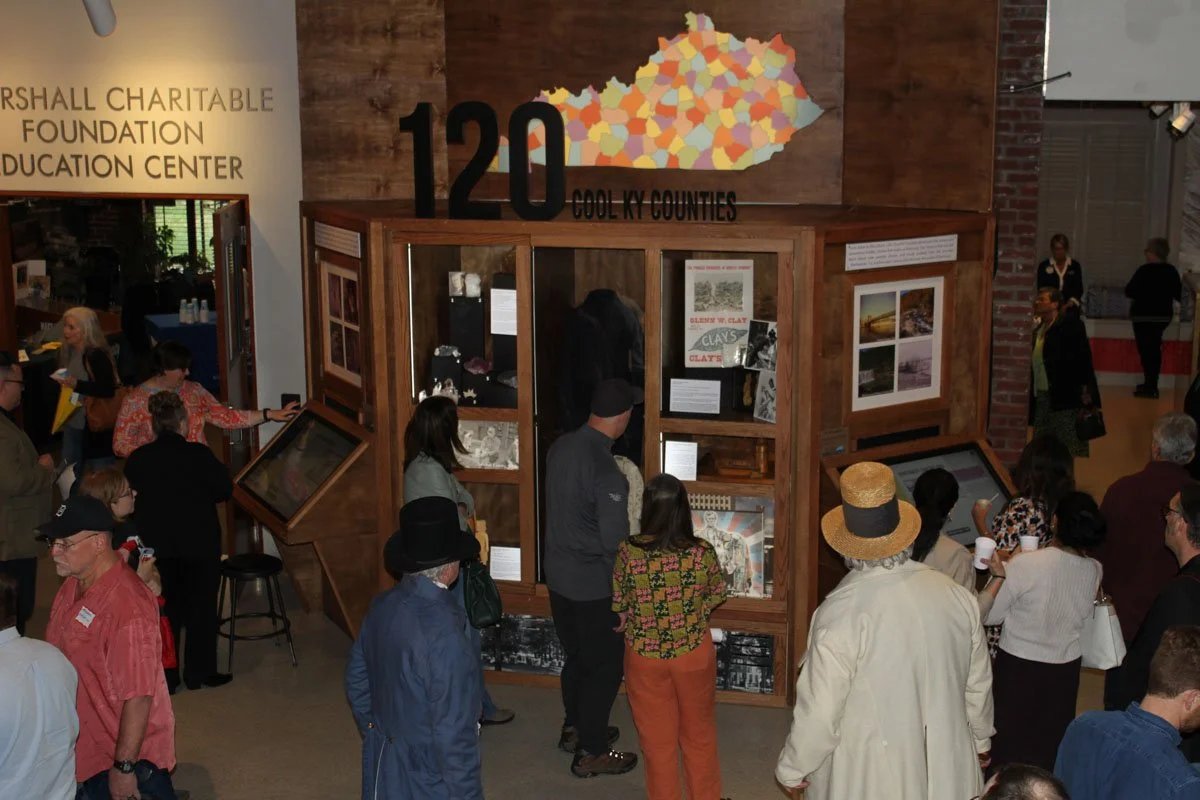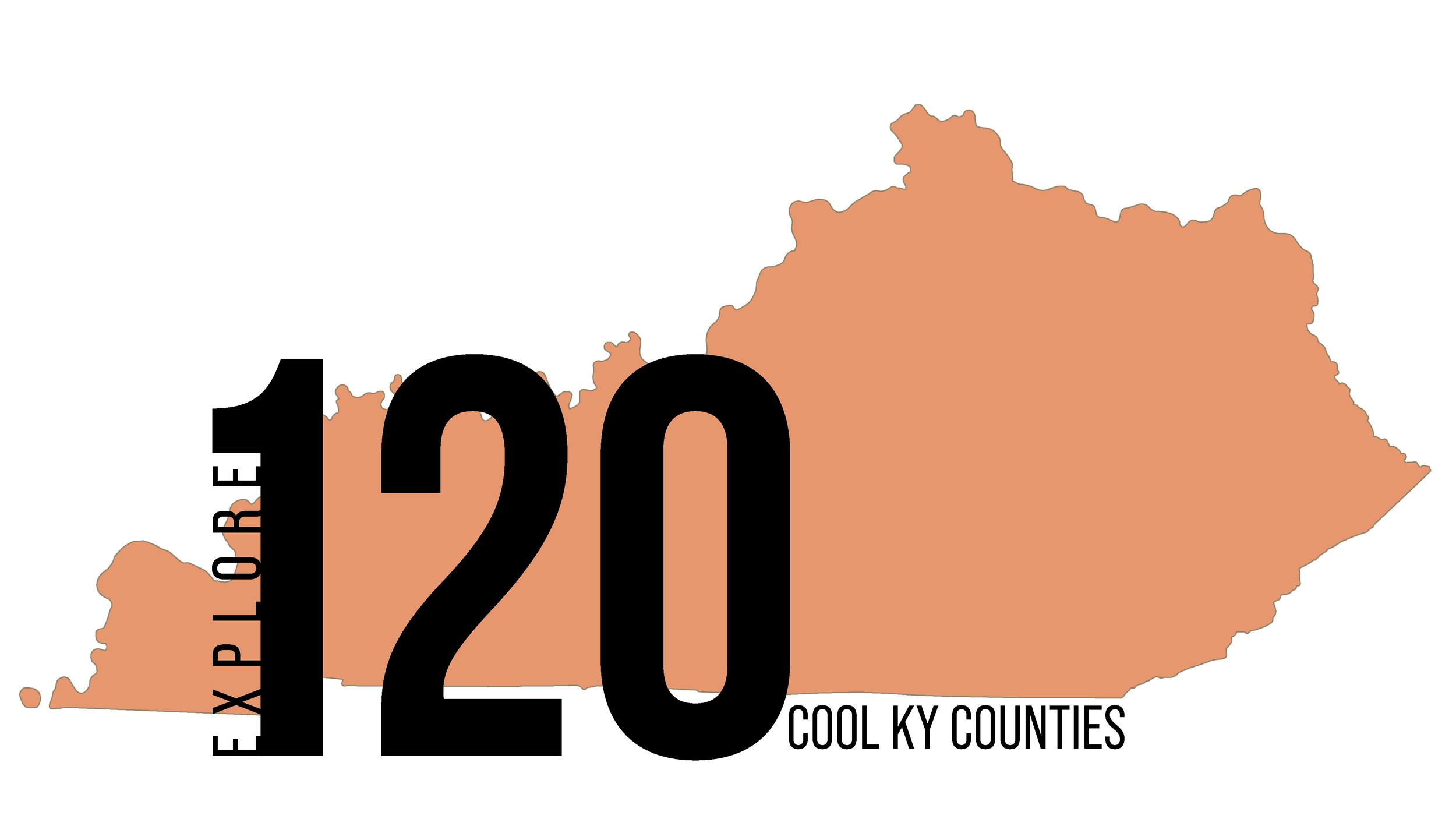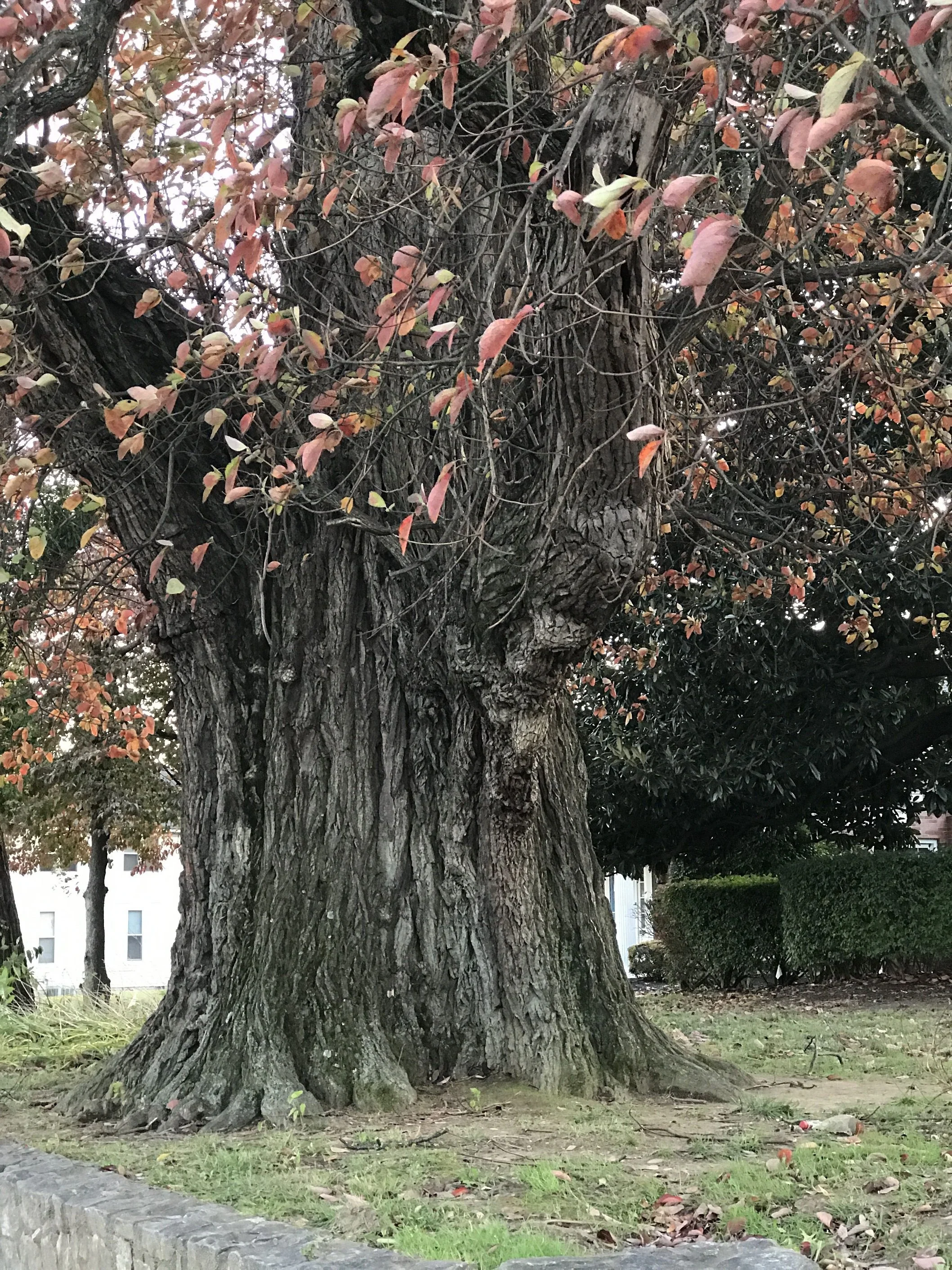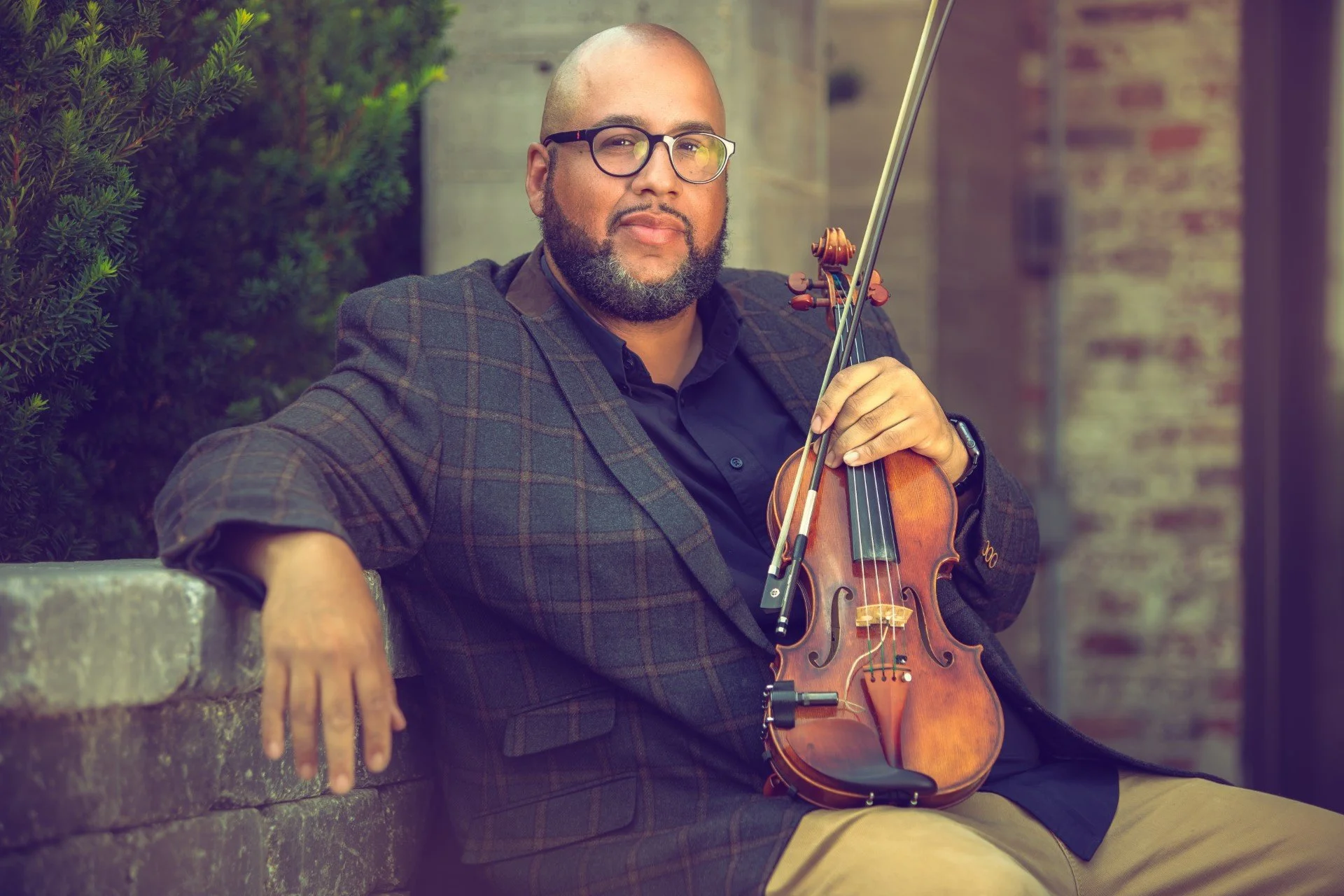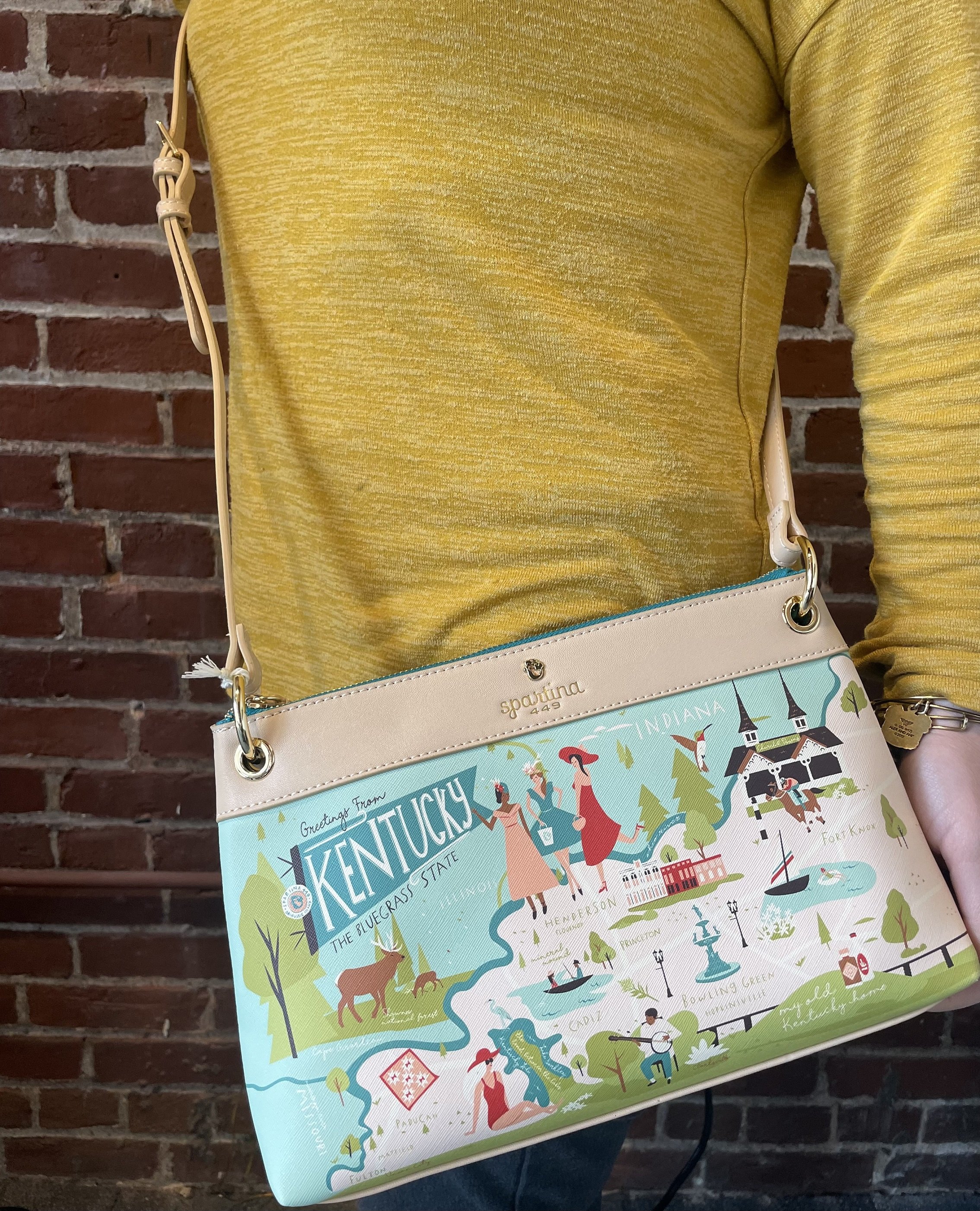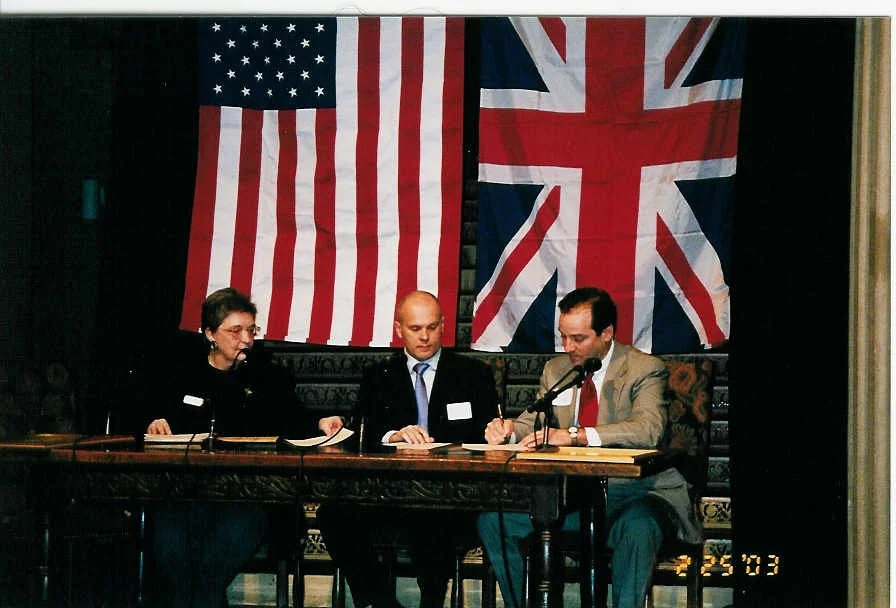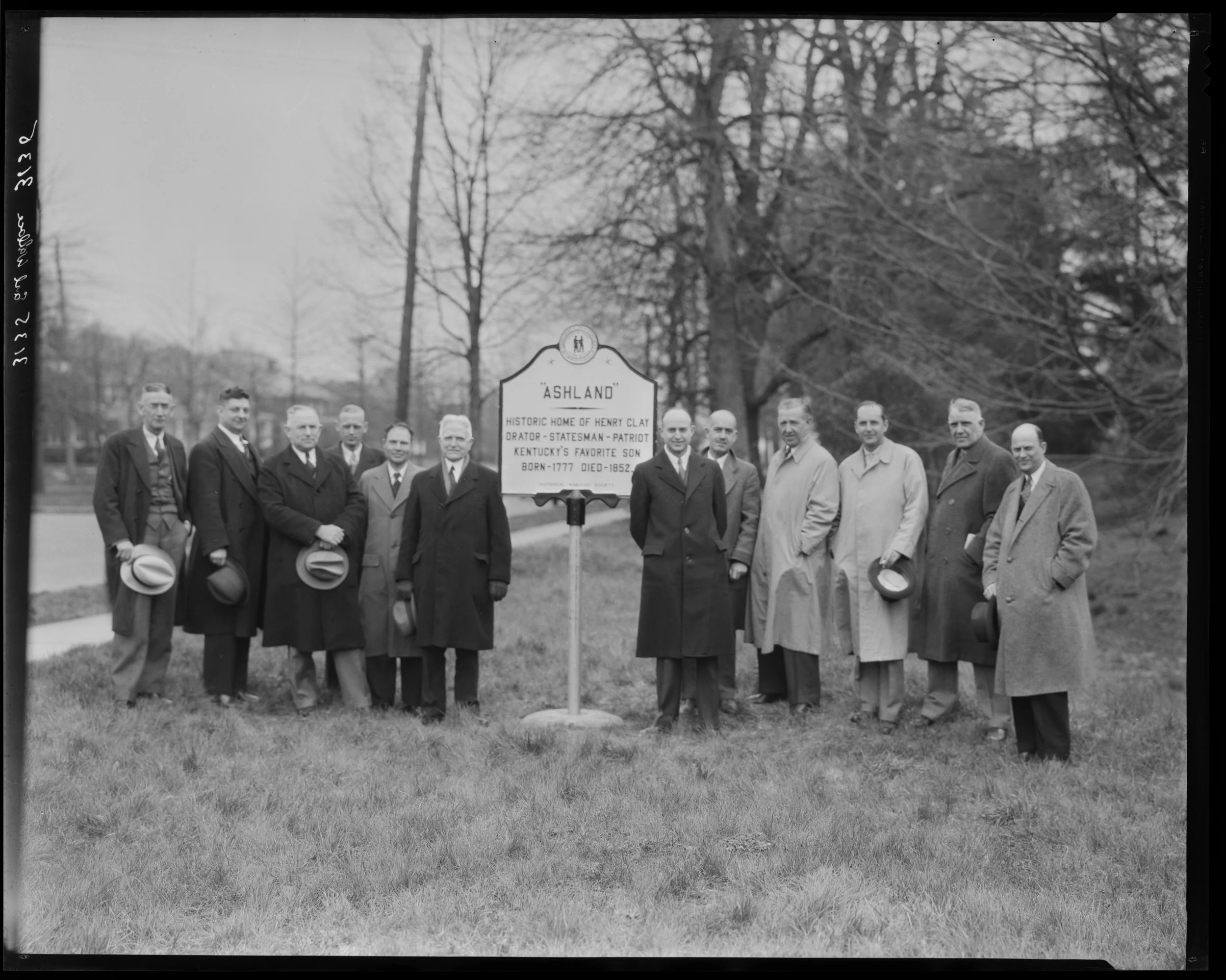Early Bird Beer Fest Tickets, Origin of 120 Exhibit, Carly Johnson and Otis Junior to Play Gala, and More
Good Monday morning,
With spring now sprung and the days of summer now just a season away, it’s time to start planning for summer fun. So I’m happy to announce that our Summer Beer Fest at Frazier is back for its fourth year!
We expect this year’s downtown street party to be bigger and better than ever—and that's saying something, because the first three years were spectacular. And while we hope the news of 200 whistle-wetting beers, seltzers, sours, and ciders whets your appetite, we’re telling you now to save you some cash.
Today through next Monday, April 1, is our early bird special. Individual VIP and General Admission tickets will never be less expensive than they are now: $75 (VIP and $40 (GA). That premium ticket provides full access to our museum’s world-class exhibitions, an additional hour of fun, dozens of premium beer selections, indoor plumbing, and AC—a literal cool factor that is hard to find in July. Get your tickets today!
Also in this Frazier Weekly, Jason Berkowitz takes us back to the very beginning of our 120: Cool KY Counties project while Simon Meiners explores unique sites in ten Kentucky counties. Kent Klarer and Adam Thomas showcase the Frazier’s diverse talent pool: while Kent and others are training for the Kentucky Derby Festival Marathon, Adam is preparing a Joni Mitchell tribute concert!
Plus, Hayley Harlow Rankin shares another great reason to attend A Night at the Museum: Celebrating 20 Years of the Frazier. If you don’t like gourmet food, great drinks, live music, interactive performances, dancing, and an overall good time, don’t bother to read ahead.
I hope you do, though—and I hope to see you soon at the Frazier!
Andy Treinen
President & CEO
Frazier History Museum
This Week in the Museum
Visitors check out 120: Cool KY Counties during the exhibit opening, March 15, 2024. Credit: Frazier History Museum.
Frazier president Andy Treinen introduces yodeler Phoebe White (Laurel County) during the 120: Cool KY Counties exhibit opening, March 15, 2024. Credit: Meade County Tourism.
It was September 22, 2022, and I had just been asked by our senior director of engagement, Casey Harden, to find stories from each of our state’s 120 counties. Easy enough, right? Kentucky certainly has no shortage of incredible history and heritage. Nonetheless, I found myself at a crossroads. Well . . . that may be a bit dramatic. In truth, I was weighing the pros and cons of phone calls and emails. And though I knew this journey might be made easier by opting for the latter, a small, persistent voice insisted I walk the road less traveled by picking up the phone and dialing 502s, 606s, 270s, and 859s with reckless abandon.
Why this decision? Had I foolishly sacrificed efficiency at the altar of busy signals and misdials? Of course! However, “efficiency” was never the goal. Introducing myself and the Frazier Museum to hundreds of librarians, museum officials, local historians, artists, tourism directors, and Kentuckians from all walks of life was my true goal—a benevolent will-o’-wisp taking me down highways and byways, into the hills and hollers of our wonderful Commonwealth.
But, as they say, every journey begins with a single step, and my first “step” just so happened to land in Anderson County. Actually, that is not entirely true. I first spoke with Kendall Clinton, who promptly informed me that he was now Boyle County’s director of tourism. But rather than point me in another direction, Kendall did something quite unexpected: he shared with me a story from Boyle County. Not just one, but several. Again . . . Kentucky possesses an abundance of stories and legends. And in my experience, this also applies to the thousands (if not millions) of storytellers breathing life into these stories, making sure they stay meaningful to people today and generations to come. Here we have history becoming heritage—dates and names stepping back to make way for a deeper, more personal understanding of what it means to be a “Kentuckian.” I had only made one call, but my heart was already fit to burst!
But don’t fret: Anderson County was not long in partnering with us! Director of tourism Robbie Morgan (who delivered an extraordinarily moving speech at our recent 120: Cool KY Counties exhibit opening) soon joined the effort—connecting me with Ali Howard, the descendant of a formerly enslaved Union soldier. The counties of Bracken, Breathitt, Laurel, McCracken, and Powell soon followed suit—and many others not long after. You might say we were off to the races. (I am reminded of the first counterclockwise track, built in Lincoln County to protest the distasteful “clockwise tracks” favored by the British. You can thank Amanda Gearhart from the Lincoln County Public Library for this fascinating bit of Kentucky history!)
From here, the stories continued pouring in. Most I would refer to as “hidden stories”—likely known and shared at the local level, but not so much beyond county lines. That said, there was an undeniable thread weaving its way through each story—a shared heritage, if not in content, then most certainly in spirit: a spectacular Kentucky ethos becoming more and more defined with each telling. I also realized that by stepping back and taking the long view of this project, this ever-growing network of county partnerships was planting the seeds for something truly special—an opportunity to bridge divides, rural and urban, black and white, young and old.
Months later, hundreds of Kentuckians contributing to this project are in service to something even more profound than stories and storytelling. If March 15’s exhibit opening was any indication, there exists an intense desire within the Commonwealth to not just connect with our history and heritage, but with each other. I am supremely uplifted by this outcome and honored to call Kentucky my home—and Kentuckians, from Hickman to Pikeville, my friends and family.
Jason Berkowitz
Stories in Mind Facilitator
In Case You Missed It: “Blue Moon of Kentucky” by Phoebe White
On March 15, as part of our 120: Cool KY Counties exhibit opening, fourteen-year-old yodeler Phoebe White from London, Laurel County, performed live music. (At one point in Phoebe’s set, rapper B. Stille from Nappy Roots got up to boogie!) Best of all, Phoebe got to make Kentucky music history: when she performed “Blue Moon of Kentucky” by bluegrass icon Bill Monroe, we invited all the musicians featured in the exhibit—some thirty-four individuals from twenty-one different counties—to sing backup! Enjoy the video of the full performance below.
Plus, if you’d like to see some photos of the exhibit opening, you can find them in last week’s Frazier Weekly.
Finally, don’t forget our free membership campaign! The five Kentucky counties who get the most Frazier Weekly subscribers per capita win free membership—for all their residents! So spread the word to folks in your county. You can also direct your county residents to fraziermuseum.org/120-counties-sign-up or share the flyer below. The contest ends June 1.
Simon Meiners
Communications & Research Specialist
Exploring Kentucky graphic. Credit: Frazier History Museum.
As part of our 120: Cool KY Counties exhibit, we’re curating a list of 120 unique sites to visit: one site in each county! In 2024, once a month, we’ll share sites in ten counties, completing the list in December. For March, we’re sharing sites in these counties: Carroll, Carter, Casey, Christian, Clark, Clay, Clinton, Crittenden, Cumberland, and Daviess. I extend a special thank you to Kentucky Historical Society, whose Historical Marker Program has been a brilliant resource for this list!
Liberty Bell replica on display at Veterans Park in Liberty, Casey County, June 30, 2022. Credit: Dave W, Historical Marker Database.
KHS Historical Marker at Coe Ridge in Cumberland County, December 12, 2023. Credit: Frazier History Museum.
Sassafras tree in Owensboro, Daviess County, November 1, 2020. Credit: Duane and Tracy Marsteller, Historical Marker Database.
James McBride Tree Site. (38°40.843′N, 85°11.111′W) In June 1754, frontiersman James McBride joined George Washington’s army. That same year, he canoed down the Ohio River to the mouth of the Kentucky River, now at Carrollton, Carroll County. He carved his initials in a beech tree that once stood here. They served as a marker for thirty years, being cited at the Battle of Blue Licks.
Beckham County. (38°17.767′N, 83°10.850′W) On February 9, 1904, Gov. J. C. W. Beckham signed a law creating Beckham County. Cobbled together from parts of Carter, Elliott, and Lewis counties, Beckham comprised a sub-400-square-mile territory—including what is now Olive Hill, Carter County. On April 29, a Court of Appeals ruling struck down the law, thereby dissolving the county.
Liberty Bell. (37°19.171′N, 84°56.324′W) On July 4, 2007, a Liberty Bell replica was dedicated at Veterans Park on Hustonville Street in Liberty, Casey County. Cast by the Whitechapel Bell Foundry in England, which made the original bell in 1753, the replica has a forty-seven-inch diameter and weighs 2,100 pounds. It is displayed as a tribute to Casey County’s veterans.
Peace Park. (36°51’49.1”N, 87°29’05.5”W) On December 8, 1907, around 2 a.m., armed and masked Night Riders marched in solid phalanx through Hopkinsville, Christian County. They destroyed, doused with oil, and burned a large tobacco warehouse owned by John C. Latham. The following year, Latham died and bequeathed the property to the city of Hopkinsville as a park.
Eskippakithiki. (37°56.373′N, 83°59.852′W) In 1736, a French Canadian census reported 800 to 1,000 residents living in Eskippakithiki. The 3,500-acre Shawnee village, centered around a log fort here, now near Kiddville, Clark County, was inhabited from roughly 1670 to 1754. When French and English traders visited, the Shawnee traded furs and skins for guns, gunpowder, and jewelry.
Red Bird Petroglyph. (37°09’30.8”N, 83°45’42.3”W) On December 7, 1994, the Red Bird Petroglyph, known since pioneer days, fell from a sandstone cliff and rolled onto highway 66. It was then transferred to this site in Manchester, Clay County, for display. Carved onto the boulder are eight Old World alphabets that were extinct when Columbus reached the Americas in 1492.
Seventy-Six Falls. (36°46’41.8”N, 85°07’35.0”W) Located on Indian Creek near Seventy-Six, Clinton County, Seventy-Six Falls is believed to have been named after the community—not the height of the falls before the impoundment of Lake Cumberland. In 2004, boat parties in the cove below the falls got so wild that Fish and Wildlife had to send extra officers to break them up!
Saline Trace. (37°24’08.8”N, 88°01’16.3”W) 1803, Flynn’s Ferry began operating at the Ohio River crossing of this trail, Saline Trace, which extends from Mattoon to Weston, Crittenden County. Historically, Native Americans had followed the trace to hunt bison, deer, and elk. George Flynn developed it into a wagon road. However, as river trade waned, the port town of Weston declined.
Coe Ridge. (36°40’28.2”N, 85°27’44.2”W) In 1866, the once-enslaved Ezekiel and Patsy Coe founded Coe Colony, a.k.a. Zeketown, on the 1,500-acre Coe Ridge in Cumberland County. The “Black Coes” logged, farmed, rafted on the Cumberland River, and made moonshine. A cemetery at the location today contains over 100 unmarked graves and several informational markers.
Sassafras Tree. (37°45.296′N, 87°6.707′W) On August 24, 1933, the Messenger-Inquirer in Owensboro, Daviess County, reported Dr. O. D. Rash “has a sassafras tree on his lawn in Frederica Street which he claims to be the largest in the world.” The tree, which was first noted for its size in 1883 and is believed to 250 to 300 years old, remains standing. It is over 100 feet tall.
Simon Meiners
Communications & Research Specialist
Gala Music Lineup to Include Carly Johnson, Otis Junior, and Tony & the Tan Lines
Small Time Napoleon.
Carly Johnson.
Otis Junior.
James Racine.
Get ready to groove to the rhythm of Kentucky’s finest musical talents at the best party of the season, Night at the Museum: Celebrating 20 Years of the Frazier!
Small Time Napoleon will get the party started with their eclectic blend of jazz, folk, and swing in our Cool Kentucky exhibition in the Great Hall.
Prepare to be mesmerized by the soulful melodies of Carly Johnson, an acclaimed jazz singer based in Louisville, as she captivates the audience in our Speakeasy. Her performance will be followed by Louisville soul singer Otis Junior, whose smooth harmonies and infectious energy will have you dancing on your feet!
Upstairs in our Loft, Friends of Owsley will enjoy the stellar duo of celebrated jazz violinist and teacher James Racine (a.k.a. Maestro J) and pianist Omega Latham throughout the evening.
Tony and the Tan Lines.
Beats by Ponyboy.
But the excitement doesn’t stop there! Tony and the Tan Lines will be pulling into port for those who want to rock into the late hours. Our rooftop garden will open at 9 p.m. for DJ Beats of Ponyboy Slings, who will be spinning some good vibes all night long!
Join us on April 12 to be a part of this incredible music lineup as we dance, sing, and celebrate 20 years of the Frazier History Museum in style!
Get your tickets now and secure your spot at the event of the year. Trust us—you don’t want to miss this!
Night at the Museum Party Tickets (6:30 p.m. Entry) (Includes Late Night)
Late Night at the Museum Party Tickets (9 p.m. Entry)
See you on the dance floor!
Hayley Harlow Rankin
Sr. Manager of Fundraising
Museum Shop: “Greetings from Kentucky” Crossbody Purse
“Greetings from Kentucky” crossbody purse sold in the Frazier’s Museum Shop. Credit: Frazier History Museum.
Spring into action with this brightly colored crossbody! Our new purse is the perfect size for all your essentials: phone, wallet, and even your much-needed allergy medicine! The crossbody features adjustable straps and a scenic picture of some of Kentucky’s greatest highlights. Purchase one today in the Frazier’s Museum Shop.
Frazier Runners Team Up for Kentucky Derby Festival Marathon Relay
Kentucky Derby Festival Marathon and miniMarathon runners, undated. Credit: Kentucky Derby Festival.
And they’re off! The Frazier History Museum staff, that is.
Horses aren’t the only ones running in Louisville at Derby time. In fact, more than 10,000 runners will take part in this year’s Kentucky Derby Festival Marathon and miniMarathon on Saturday, April 27. Among them will be two relay teams from the Frazier completing the 26.2-mile course that wends its way through town along Main Street (passing right in front of the Frazier), through Old Louisville, around iconic sites like Central Park, Churchill Downs, and Iroquois Park, out River Road, and ending at Lynn Family Stadium.
This race has grown remarkably since 301 runners took part in the first miniMarathon in 1974, but it maintains an intimate, community-organized feel. The course is always well-staffed with volunteers who are joyful and supportive. Live music blasts from stages downtown and front yards in the neighborhoods. Some years, you can even get handed a beer from reveling fraternity brothers near U of L! (I can neither confirm nor deny my participation in the latter activity.) Of course, the real merit of the race is in challenging yourself to reach the finish line and communing with your neighbors as we all sweat our way down the road together.
We at the Frazier are building camaraderie before the race, too, by heading out every Tuesday after work for a training run along the river. If you’re lucky, you could catch a glimpse of ten huffing and puffing history enthusiasts making laps around Waterfront Park.
Our two teams include Frazier president Andy Treinen and regular Frazier Weekly contributors Simon Meiners, Mick Sullivan, Amanda Briede, Nick Cook, Leslie Anderson, Brian West, and Jason Berkowitz, plus a special guest runner from the Filson Historical Society, Brooks Vessels. You’ll hear more from them in the coming weeks about their history with running, training, running culture, and a race report following the event.
For my own part, I have loved running for many years. I was thrilled at the response I got from the staff here when I suggested we participate in the race. I’ve never been fast, but I have experience with longer distances. This year will be my fifth time participating in the Derby Festival races, having run the miniMarathon once before and the full marathon three times. I even ran an ultramarathon at Burning Man once, but that’s a story for another time. Fortunately, I will only be running a portion of this year’s race!
Kent Klarer
Grant Manager & Writer
Frazier’s Adam Thomas to Perform Joni Mitchell Tribute Concert
Joni Mitchell, a musical pioneer known for her poetic lyrics and innovative sound, continues to captivate audiences with her timeless classics.
My name is Adam Thomas, and I am a part of the Frazier Museum’s Guest Services team. I’m currently partnering with Actors Theatre of Louisville in order to recognize Joni Mitchell’s enduring legacy and the importance of celebrating her contributions to music and culture. I made a decision to showcase a tribute to Mitchell underscoring her status as a cultural icon whose influence transcends time and trends. After my recent mecca to Washington state to watch Joni Mitchell perform, I knew a tribute was in order. Through a carefully crafted concert highlighting Joni’s musical evolution and thematic richness, the tribute show aims to introduce her music to a local audience while offering longtime fans a chance to revel in her timeless classics.
In 2024, Joni Mitchell’s music resonates with a newfound poignancy and urgency, serving as a source of comfort, introspection, and empowerment. As we navigate the complexities of the modern world, Joni Mitchell’s unwavering commitment to artistic integrity and emotional authenticity stands as a beacon of inspiration. Her advocacy for environmental conservation and social justice remains as relevant as ever, urging listeners to confront pressing global issues and enact positive change.
The tribute show will take place at Actor Theatre of Louisville’s Bingham Theater on Friday, April 5, at 7 p.m. This in-the-round experience provides an opportunity for audiences to immerse themselves in Mitchell’s timeless music and rediscover the depth and beauty of her artistic vision. As we celebrate Joni Mitchell together, let us honor her past achievements while reaffirming her ongoing relevance and influence in shaping the world we inhabit today and aspire to create tomorrow.
For more information, or to purchase tickets, please visit actorstheatre.org.
Adam Thomas
Guest Services
Ellen Birkett Morris on Beware the Tall Grass
I love how many good writers we have in our state. There is evidence of that in the Literary Kentucky section of our Cool Kentucky exhibition at the Frazier. And we keep adding to the list by including books in our collection in the Great Hall. Another book we will add is Beware the Tall Grass by Ellen Birkett Morris. It’s her debut novel and it’s already winning prizes for literary excellence. I asked Ellen to write something for Frazier Weekly, and the storyline is compelling. She has two upcoming appearances to tell you about, and of course, information about how you can order a copy of her novel.—Rachel Platt, VP of Mission
Front cover of Beware the Tall Grass by Ellen Birkett Morris, 2024. Credit: Columbus State University Press.
History calls to us to examine what matters most. History as a canvas for fiction can build empathy and take us places we could never imagine going. The Vietnam War has always intrigued me, not only because of the debate it generated, but because my uncles served and were changed by the war. When I heard a National Public Radio story on children with past life memories of battle, I decided to build a work of fiction around the idea. Despite the fact that I had served as the editor of the Patton Saber, the newsletter of the Patton Museum at Fort Knox, for ten years, I choose to write about the mother of a child with memories of Vietnam. This posed some interesting questions about the challenges these memories would present for parents who had hoped to give their child Charlie a perfect upbringing. I couldn’t resist adding a second point of view character, a young man fresh off a ranch in Montana, Thomas, who serves in Vietnam. Beware the Tall Grass is a novel about an extraordinary connection between Charlie and Thomas, who are separated by decades but joined by trauma. With war as a backdrop and empathy at the heart of the novel, this dual narrative takes on the power of love and courage to meet unforeseen circumstances. The novel won the Donald L. Jordan Prize for Literary Excellence and was selected by Lan Samantha Chang of the Iowa Writers Workshop. As Chang said, “Beware the Tall Grass explores the evocative mysteries of time and memory.”
I will discuss Beware the Tall Grass with Tom Eblen at Joseph Beth in Lexington, March 26, 7 p.m., and with Dr. Ian Stansel at Carmichael’s in Louisville, March 28, 7 p.m.
Learn more by visiting my website. You can also pick up a copy of Beware the Tall Grass at Carmichael’s.
Ellen Birkett Morris
Author, Beware the Tall Grass
Guest Contributor
20th Anniversary Photo: Royal Armouries Agreement Signing, 2003
Royal Armouries Museum representatives sign an agreement with the Frazier Museum in Leeds, February 25, 2003. Owsley Brown Frazier simultaneously signed a copy of the agreement here in Louisville. Credit: Frazier History Museum.
On February 25, 2003, a year before he opened the Frazier Museum, founder Owsley Brown Frazier signed a formal agreement entering into a partnership with the Royal Armouries Museum in Leeds. An ancient institution of the Tower of London, the Royal Armouries Museum was originally founded to manufacture armor for the Kings of England. The agreement outlined plans for the Frazier Museum to borrow and display arms and armament from the Royal Armouries. It was the first time that a British national museum had engaged in an ongoing collaboration with an organization beyond its shores!
Simon Meiners
Communications & Research Specialist
Bridging the Divide
Last Call for Tuesday’s Happy Chandler and Jackie Robinson Program!
Opening day for Major League Baseball is Thursday, March 28, when all thirty teams will be in action. Join the Frazier History Museum two days earlier on Tuesday, March 26, to learn more about how Kentucky played a vital role in the color barrier being broken in baseball. Ben Chandler will join us to talk about his grandfather, A. B. “Happy” Chandler, who was baseball commissioner at the time, and his role in the decision. One of our panelists who will be asking questions is Tad Myre, a local attorney, baseball enthusiast, as well as a past president of the Pee Wee Reese Chapter of the Society for American Baseball Research (SABR). He sent me this paragraph about how our state and our city have been at the forefront of a lot of baseball history.
“Kentucky is at the crossroads of many historic events, best symbolized by being the birthplace of both Abraham Lincoln and Jefferson Davis,” Tad wrote. “Kentuckians also played a big role in breaking baseball’s color barrier. The first time occurred in Louisville when Fleet Walker played here in 1884. That didn’t last long. Much later, Louisvillians were on either side of Jackie Robinson’s entrance into the majors, with Felton Snow helping on the Negro Leagues side, Pee Wee Reese waiting on the MLB side, and Happy Chandler there helping to escort him across.”
It’s going to be a rich night with Greg Galiette of the Louisville Bats talking about the upcoming season but also their efforts to share diverse stories. And Lexington author Dorian Hairston will read from his new book Pretend the Ball is Named Jim Crow: The Story of Josh Gibson.
We have a few seats left, so be sure to purchase your tickets now. And yes, we will have a rendition of “Take Me Out to the Ball Game.”
Rachel Platt
VP of Mission
History All Around Us
A Brief History of KHS’s Historical Marker Program, 1936–Present
When I research a topic for Frazier Weekly, I enjoy doing the work: scouring Google and newspapers.com to find minute details. However, when it comes to my ongoing “Exploring Kentucky: A Site in each County” series, I have very little work to do. Why? Because the good folks at Kentucky Historical Society have already done it! For seventy-five years, KHS has operated a Historical Marker Program—and about a year ago, they launched a web page where you can read and search those markers online. So, if you appreciate this Exploring Kentucky series, don’t thank me: thank Jim Seaver and his colleagues at KHS for taking the Society’s decades of research and making it available to internet users, free of charge. I’ve asked Jim to share a bit about the marker program and the incredible work they’re doing to preserve Kentucky history.—Simon Meiners, Communication & Research Specialist
Historical dedication of Marker #1 at Ashland in Lexington, April 19, 1936. Credit: Lafayette Studios photographs, University of Kentucky Special Collections.
In 2024, the Kentucky Historical Society’s Historical Marker Program is proud to celebrate its seventy-fifth anniversary, having begun in 1949 in partnership with the Kentucky Department of Highways. Today, over 2,400 historical markers span the Commonwealth in all 120 counties, making this statewide marker program one of the largest of its kind in the United States.
The KHS Historical Marker Program’s beginnings were far more humble, however, and predate this collaboration between two state agencies in the decades after the Second World War. Historian Kurt W. Krouse chronicles the earliest regional marker program in Kentucky in his 2022 book Lexington’s Own Monuments Men: The Historical Markers Society and the Origin of Roadside Markers in Kentucky. In the closing weeks of 1935, Krouse explains, a small group of businessmen, civic leaders, and historians gathered in Lexington to charter a private, nonprofit organization dedicated to commemorating important historical sites in and within driving distance of Fayette County. They desired to “advertise the Bluegrass” amid the Great Depression, educating Kentuckians and visitors through roadside historical markers while boosting civic pride and the local economy in the burgeoning age of the automobile.
The Historical Markers Society erected twenty-one historical markers in central Kentucky before disbanding on the eve of World War II. Marker #1 commemorates statesman Henry Clay’s Ashland Estate in Lexington and still stands today, as do many of the others from that era that are now in the Kentucky Historical Society’s care. From the beginning, Krouse tells us, the Historical Markers Society aspired “to spark a state-wide movement in historical demarcation and preservation.” In this regard, this short-lived organization established a solid foundation upon which the state government’s Historical Marker Program would be built only a decade later.
As the Kentucky Historical Society and its community partners across the Commonwealth pause to reflect upon the past seventy-five years of the Historical Marker Program, we tip our hats and raise a glass to honor the visionaries who established the Historical Markers Society nearly nine decades ago. Their mission to use roadside markers to share Kentucky’s many remarkable histories inspires us still.
James B. Seaver, Ph.D.
Community Engagement Coordinator, Kentucky Historical Society
Guest Contributor
